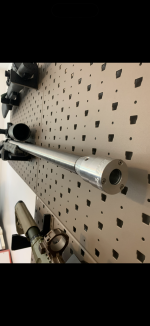in the Olympics before the 1980s, ski jumpers didn’t use the technique of leaning forward and putting your skis in a V. There was some Swedish jumper who started doing it, and suddenly started beating everyone. Just because people are good competitors, doesn’t make them right about everything in their sport.
This reminds me of the cut roast story. Old man story alert! Old man story alert!
This newlywed couple finally settled into a regular home life and have an actual home cooked meal. One of the gifts was a 13" x 9" roasting pan, big enough for a turkey.
The wife unwraps the roast from the cellophane and the cuts a bit off of each end and then places it on the foil in the roasting pan. Her husband asks why. She says, "My mom always did that."
Curious, she went to her mother and asked why she did. Her mother replied, "My mother always did that."
So, she went to her grandmother, who was still alive and quite lucid and asked her about cutting the ends off of the roast. The explanation was simple.
"When your grandfather and I got married, the only pan I had was 8 inches by 8 inches and I had to cut the roast to make it fit. Then I would take the tips and shred them and make a gravy."
The solution to one problem became a generalization.
Same with skiers.
And possibly the same with shooters. Really good shooters who do something a certain way and believe that is the way to do it.
What Hornady was trying to say is that there was no way to tell if the tuner helped more than another device on the barrel and changing the setting did not help. Then, again, they were not shooting a 2 inch or 3 inch group and getting the one they liked and pronouncing it done.
Discussed earlier, you could have variances in mass and center of gravity and there is not yet a way to know where that moment arm is going to be and marked so that you could load it facing up, for example. There will always be some variances and that is larger groups are more helpful. Otherwise, it is easy to assume an influence that may be nothing more than coincidental noise.
They are getting the same results if they have just a brake or even a suppressor on it, in a large enough group. And they have an ammo factory at their disposal, by golly.
A device can have a coincidental input to group size. I have a brake on the rifle to tame recoil. Redirected recoil impulse results in a softer push on the shoulder, which avoids pain and flinching. Therefore, my shooting mechanics flow better because I am not anticipating pain. So, by relaxing, I could say that the brake is improving accuracy but only because it is making the rifle more shootable. And possibly the weight, too.
Full disclosure, I tried one of those Limbsaver donuts. It successfully brought me from a .61 inch group to a 3 inch group. By the time I took the hint, the barrel was hot, I was at a range and not enough time to wrestle the brake off so I cut it off with my knife. Others may like those but they do not work for me. Cost was not the issue. It was an experiment. And judging what I can see from others getting the more solid tuners, I don't think I need one.


